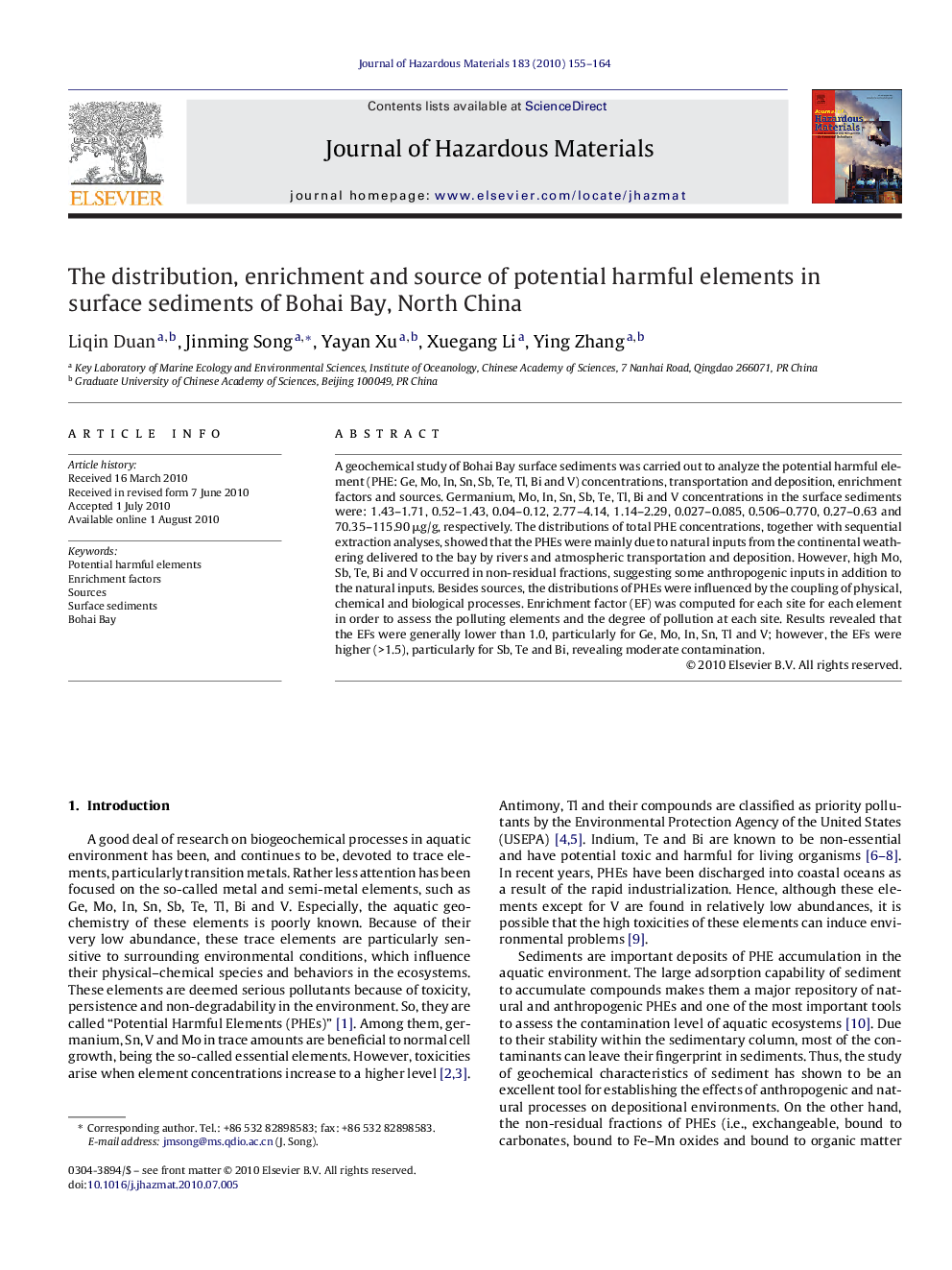| Article ID | Journal | Published Year | Pages | File Type |
|---|---|---|---|---|
| 579511 | Journal of Hazardous Materials | 2010 | 10 Pages |
Abstract
A geochemical study of Bohai Bay surface sediments was carried out to analyze the potential harmful element (PHE: Ge, Mo, In, Sn, Sb, Te, Tl, Bi and V) concentrations, transportation and deposition, enrichment factors and sources. Germanium, Mo, In, Sn, Sb, Te, Tl, Bi and V concentrations in the surface sediments were: 1.43-1.71, 0.52-1.43, 0.04-0.12, 2.77-4.14, 1.14-2.29, 0.027-0.085, 0.506-0.770, 0.27-0.63 and 70.35-115.90 μg/g, respectively. The distributions of total PHE concentrations, together with sequential extraction analyses, showed that the PHEs were mainly due to natural inputs from the continental weathering delivered to the bay by rivers and atmospheric transportation and deposition. However, high Mo, Sb, Te, Bi and V occurred in non-residual fractions, suggesting some anthropogenic inputs in addition to the natural inputs. Besides sources, the distributions of PHEs were influenced by the coupling of physical, chemical and biological processes. Enrichment factor (EF) was computed for each site for each element in order to assess the polluting elements and the degree of pollution at each site. Results revealed that the EFs were generally lower than 1.0, particularly for Ge, Mo, In, Sn, Tl and V; however, the EFs were higher (>1.5), particularly for Sb, Te and Bi, revealing moderate contamination.
Related Topics
Physical Sciences and Engineering
Chemical Engineering
Chemical Health and Safety
Authors
Liqin Duan, Jinming Song, Yayan Xu, Xuegang Li, Ying Zhang,
